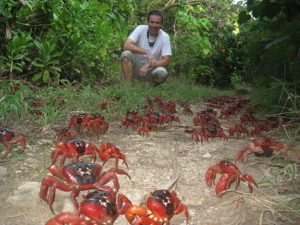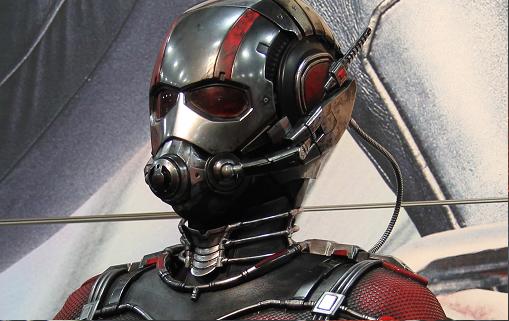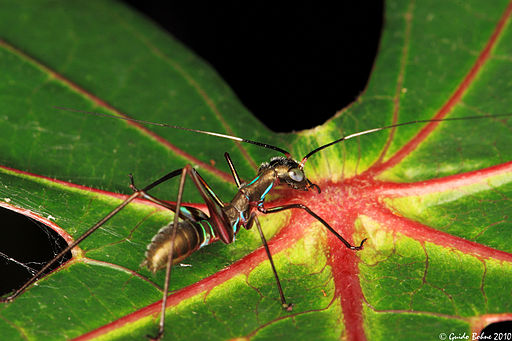How does an ant population become toxic to an environment?

In July, 2015, this article chronicled that the Christmas Island yellow crazy ant population became an environmental concern in the mid 1990s. Environmental scientists started to control the population, which was, according to this article, expected to be somewhat under control by 2002.
Here’s why eradication of the yellow crazy ant on Christmas Island was less than successful, and why the yellow crazy ant has been such a successful invasive species.
The yellow crazy ant, Anoplolepis gracilipes was accidently introduced to Christmas Island more then 70 years ago, but did not present any undue environmental concern until the mid 1990s. Around this time, crazy ants began forming “supercolonies” over huge areas of intact rainforest, with catastrophic results for the native biota.
The yellow crazy ant Anoplolepis gracilipes was accidentally introduced to Christmas Island more than 70 years ago, but did not present any undue environmental concern until the mid 1990s. Around this time something (perhaps some environmental factor, or secondary introductory of a new genotype) triggered the formation of “supercolonies” by this highly invasive species.
In most ant species there is a single queen in each nest, and worker ants from neighbouring nests display aggression towards each other, even though they are the same species. These factors tend to keep ant density at relatively low levels.
However crazy ants have the ability to form multi-queened “supercolonies”, where rather than fight each other, the offspring of different queens cooperate to form infestations. There can be several thousand ants per square metre of forest floor in these supercolonies, but at any one time there are just as many ants foraging in the treetops above.
Read the rest of this article at: wilderness.org.au
To read about the Australian government’s failure to fund an eradication program in Queensland, Australia, despite an incredible opportunity to address the crazy yellow ant’s “Achilles heel,” visit the next page.



